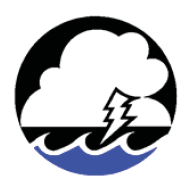 Wind Science & Engineering Research Center
Wind Science & Engineering Research Center
Debris Impact Test Facility
P.O. Box 41023
Lubbock, Texas 79409-1023
Texas Tech Debris Impact Report
Report No. _20130405A
Specimen No. _Single____
Test Date: _April 5, 2013_
5.0 CONCLUSIONS
Within the bounds of reasonable engineering and technical certainty, and subject to change if additional information becomes available, the following is my professional opinion:
Impact tests were conducted for on April 5, 2013 for Staying Home Corporation on their Hide-Away-2 – 48-in. x 86-in. long x 78-in. tall x 1/4-in. above ground deployable shelter. In the non-deployed configuration, the shelter is approximately 16-in. deep. The shelter was constructed of three deploying panels using 3 – continuous hinges with 1-in. pins. The roof section deploys with the sides. The debris impact tests on the shelter were successful and the shelter therefore meets the debris impact guidelines of FEMA 320, “Taking Shelter from the Storm” and ICC-500. These guidelines require 100 mph impacts as produced by a missile propelled horizontally by a 250 mph tornado. All testing was conducted in strict accordance to the guidelines of FEMA 320 (2008) and ICC-500 (2008).
The manufacturer is advised to install warning signs inside the shelter that warns the occupants to not come in contact with the surfaces of the shelter and to wear hearing protection during a storm event. Occupants should be further warned of the danger of attaching lighting and other fixtures to the wall or ceiling surfaces, since they may become detached during a storm. Any alterations made to the shelter design or construction must be approved or retested by WISE at Texas Tech University.

______________________________
Engineer of Record
Larry J. Tanner, P.E.
